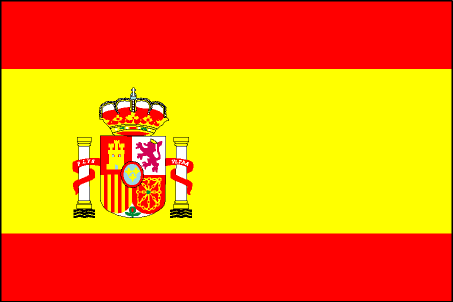Login form
Customs of Spain
Marriage and Family
 Many people still seek parental approval before marrying, and long engagements are common while couples save enough money to start married life in their own home. The average age for men to marry is 27, while women generally marry between the ages of 20 and 24. The divorce rate is low.
Many people still seek parental approval before marrying, and long engagements are common while couples save enough money to start married life in their own home. The average age for men to marry is 27, while women generally marry between the ages of 20 and 24. The divorce rate is low.
Today Spanish families tend to be small—the country has one of the lowest population growth rates in the world. Links with the extended family remain close. The husband is traditionally considered the head of the household, and the wife is responsible for caring for the house and children. Today, however, many women living in urban areas work outside the home.
Eating
Breakfast is generally a light meal of coffee or hot chocolate, bread and jam, or churros (pieces of dough made of flour and butter, deep-fried and sprinkled with sugar). For their midday and evening meals Spaniards enjoy a wide range of meat and fish, salad and fruit, and cheese. Adults usually drink wine with their meals, and children drink mineral water or soft drinks. There is usually plenty of bread. Traditional Spanish dishes include gazpacho (a cold soup of onions, peppers, tomatoes, and garlic); paella (rice, saffron, chicken, seafood, and a variety of other items cooked and served in a large, shallow pan); calamares en su tinta (squid cooked in its ink and served on a bed of rice); and cocido (Castilian stew). Tapas (snacks), served in many bars, can be as simple as olives or chunks of cheese, or as elaborate as meatballs in a spicy sauce. There is a rich variety of regional dishes and local specialties.
Traditionally, the main meal of the day is eaten at around 2 pm and the evening meal at 9 or 10 pm. Many people have a merienda (afternoon snack), often a bocadillo (sandwich) with a hot drink, at around 5 or 6 pm. At a formal dinner, the hosts indicate the seating arrangements, and women and older people are seated first. Hands (not elbows) are kept above the table and not placed in the lap during the meal. Upon finishing a meal, the knife and fork are laid side by side on the plate.
Socializing
Spanish greetings include ¡Hola! (“Hello”), ¡Buenos días! (“Good morning”), and ¡Buenas tardes! (“Good afternoon”). When being introduced to someone, a Spaniard might say Encantado de conocerle (“Delighted to meet you”). ¿Cómo está Usted? (“How are you?”) can be answered with Bien, gracias (“Well, thank you”).
A handshake usually accompanies a greeting. Male friends often add a pat on the back and, if they have not seen each other for some time, an abrazo (hug). Female friends often kiss each other on both cheeks when greeting or parting. The use of first names is not widespread, and it is still fairly common in business or when addressing older people to use Señor (“Mr.”), Señora (“Mrs.”), or Señorita (“Miss”). In some areas, the titles Don and Doña are used with the first name to show particular respect.
The Spanish often meet their friends in cafés or entertain in restaurants rather than in their own homes. In general, people call ahead before visiting, but the Spanish are considerate hosts and anyone who drops in unannounced during a meal is likely to be asked to join the others at the table. The invitation is usually out of courtesy, and is refused with a ¡Que aproveche! (“Enjoy your meal”). When invited to someone’s home for dinner, guests often bring a gift to enjoy during the meal, such as wine or dessert.
Recreation
The main spectator sport is soccer, which is followed passionately. Spaniards also enjoy golf, basketball, tennis and, in certain regions, hunting, skiing, and fishing. Bullfights still draw crowds. The bullfight, so important a part of Spanish tradition, has been called a fiesta brava. It is far more than a mere spectator sport; fans applaud not only the bravery of the toreros but their dexterity and artistry as well.
Television and cinema are popular. Theater, music, dance, and opera are well supported in cities such as
Holidays and Celebrations
The Spanish tend to take their main three- or four-week vacation in July or August. Official holidays include New Year’s Day (1 January), the Day of the Three Kings (6 January), Feast of San José (19 March), Good Friday, Labor Day (1 May), Corpus Christi, Santiago Day (25 July), National Day (12 October, the anniversary of Christopher Columbus' arrival in America), All Saints’ Day (1 November), Constitution Day (6 December), Immaculate Conception (8 December), and Christmas Day (25 December). The Day of the Three Kings, or Magi, is the day on which the Spanish traditionally open Christmas gifts, commemorating the day that the Three Magi presented their gifts of gold, frankincense, and myrrh to the baby Jesus.
Fiestas, or festivals, are an outstanding feature of Spanish life. They usually begin with a High Mass followed by a solemn procession in which venerated images are carried on the shoulders of the participants. Music, dancing, poetry, and singing often enliven these colorful occasions. The feast of
Another important festival is Fallas de
In May or June, hundreds of thousands of people ride on horseback or in colorful horse-drawn carriages to El Rocío during the Romería del Rocío, a pilgrimage honoring the Virgin Mary. Flamenco dancing and other festivities ensue once the celebrants have reached El Rocío.
A pilgrimage to Santiago de Compostela takes place in July, honoring the name day of Saint James (
Source: Encarta Interactive World Atlas

